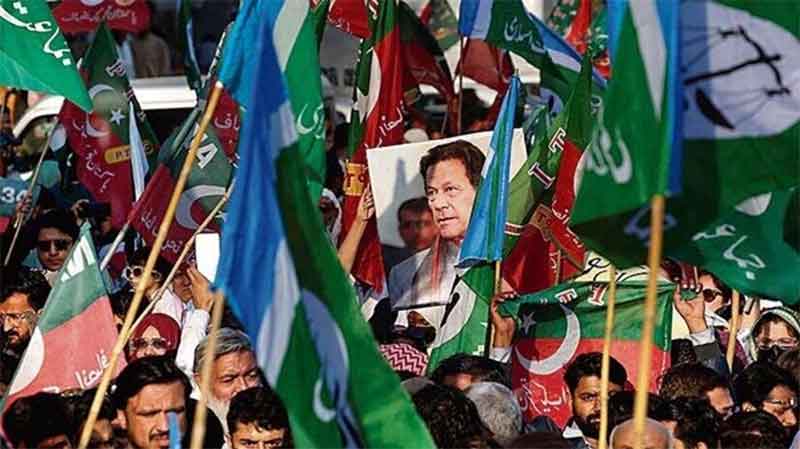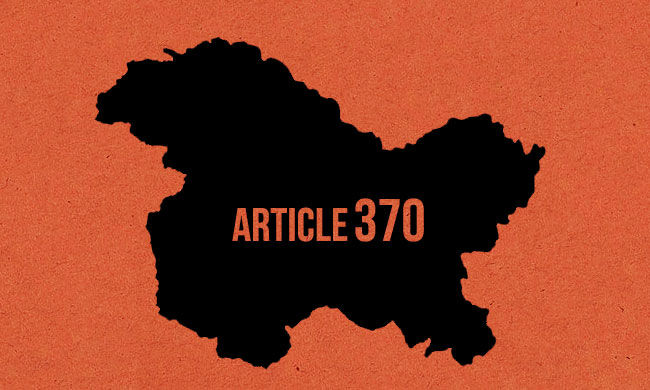
The Kashmir issue has crossed decades of violence and unrest. It has, unfortunately, become one of the Asia’s longest and bloodiest conflicts today. Since 1947, when India and Pakistan divided their borders on the basis of “two nation” theory, the final “political settlement” of Kashmir remained an “unsolved” political problem. Although, the problem was brought under UN consideration and more than eighteen resolutions were passed,mentioning Kashmir as a “disputed territory” and not an “integral” part of India. However, the “deliberate” failure of then political establishment of India to agree on the status of the Jammu and Kashmirby diplomatic means, eventually,turned thewhole state into a “conflict culture” zone. Over the years, the consequences of this long-standing conflict havecrept into the deepest layer of Kashmir society, almost affecting every single individual’s psychological determination. The history is witness to the fact, that natural and collective “aspiration” of the people of Kashmir never accepted “occupation” as a legitimate solution. At the back of mind, every Kashmiri believes that he/she lives in a “political dispute” which only can be resolved through addressing the collective “aspiration” of the people of Kashmir. This “aspiration” that “Kashmir belongs to us; our voice must be considered”, has never escaped from the “consciousness” of Kashmir, despite the so called “accession” to India. Even development policies, employment schemes and different economic packages haven’t uprooted this “aspiration” from the hearts and minds of Kashmiri people.
To get their genuine and legal “aspiration” addressed, they adopted all mechanisms included participation in the Indian system of electoral democracy but the results were nothing but more “distrust” between “occupation” and “indigenous” character. It is believed that there was a huge corruption in the entire election process. Coming back from the “sick” politics, now, ‘aspiration” moves toward its last resort – the armed struggle. It was a “paradigm shift” as far as the means and methods to fulfill the “aspiration” are concerned. This is the “historical thread” which Burhan Wani had picked up. This is the actual “root” of the problem which is being deliberately ignored under the grab of unemployment, poverty, malfunctioning of the administration. It is ironical, that washed-out old “narratives” are again being blown through “national” media. The administration, instead of accepting the “reality”, is giving erroneous and irrelevant statements, calling these people as “marginal” elements that are being either paid or “mislead” by some religious groups. They don’t bother to use simple logic, had there been no historical “aspiration” and a collective “sentiment”, there would have been no Burhan Wani and of course, there would have been no vicious “cycle of violence” that Kashmir is currently going through, almost leaving 45 people dead and more than 2000 people badly injured.
After the killing of Hizb-ul-Mujahedeen’s (HM), a local militant outfit, district commander Burhan Wani, Kashmir is preparing for another 2008 and 2010; some local analysts even view it more powerful than previous mass uprisings. The news about Burhan’s killing, on afternoon 8 July, spread like wild fire and within hours more than two lakh people from adjacent areas gathered at Burhan’s village in Tral. The state administration realized the “potential threat” and as an immediate measure, all routes going to Tral were ceased, all Hurriyat leaders’ (freedom or separatist leaders) put under house arrest and Internet service blocked. However, next morning, despite of all strict restrictions, more than 3 lakh people attended funeral of Burhan Wani, chanting slogans like Hum KyaChateyAzadi (We Want Freedom), Burhan TereKhoon Say InqilaabAyaeGa (Burhan, your blood will bring revolution) and Tum Kitney Burhan Maro GayHer Gar Say Burhan NikleyGa (How many Burhans will you Kill? Every home will produce a new Burhan). The “youth” force, covering students of all standards graduates, masters, Ph.Ds., doctors, engineers, was visibly dominant in Burhan’s funeral “revitalizing” the deep rooted “aspiration” with all energy and passion. Each and every corner of Kashmir was of full of anger, an expression against “occupation” not against the people of India; a “collective voice” against treacherous bunch of politicians who have been continuously denying Kashmir’s “promised” birth right – right to self-determination. The day of Burhan’s funeral proved very much “blood thirsty” as more than 14 innocent youth got killed, about 40 lost their eye sight and 1500 got seriously injured. On the third day of “cyclic” violence, Delhi leadership came into motion. Instead of looking into the “root” cause of problem; addressing the “aspiration” of the people, New Delhi announced that more 20 companies of CRPF will be sent to Kashmir. It didn’t come as any “shock” for Kashmiri people, who would have been waiting for some “humanitarian” action from the centre because every Kashmiri knows that whenever a situation like this happens, more reinforcement to an already world’s highest militarized zone (with about 10 lack forces excluding local police) is sent to Kashmir. People met with Delhi’s decision as a part of Center’s policy to suppress the “peaceful” voice of Kashmir. After returning from his African tour, the first thing Mr. Modi, PM of India, did was an appeal to the people of Kashmir to maintain peace and let the normalcy to prevail in the valley. Another thing he mentioned in his “Kashmir” message was his “unhappiness” towards national media for giving “more” coverage to Burhan’s killing, his funeral and post-funeral episodes. It looked quite controversial, a person who had just returned from beating the “drum” of human rights in Africa, didn’t mention of innocent human killings and “brutality” done unto people of Kashmir the way he was expected me. It was just a running reference.
The “cycle of violence” is about to complete its second week without any breakin its heat and intensity. Since childhood times, the present “youth cohort” of Kashmir, to which even I belong, have been witnessing all these episodes happening around. After analyzing all ifs and buts; thiss’ and thats’ the only thing which we could logically conclude is that the centrality of Kashmir issue lies in its history which, unfortunately, is being deliberately ignored or even distorted. The deliberate attempt to deny the historical facts and recorded evidences and then organizing debates around the “minimum” possible factors like unemployment and poverty is totally a well-planned ignorance as well as arrogance. By taking these “irrelevant” measures, India is herself exposing her political “dichotomy” to the youth of Kashmir. Since 2008unrest, “youth” is questioning India’s false claims of being the world’s largest democracy by criticizing her “duality” while dealing with Kashmir issue. They don’t accept Delhi’s self-created “integral part” theory and preferably reply to Delhi in terms of “us” and “you” which is a clear stand against the “alienation” that has eventually developed into a dominant character of Kashmiri youth psyche. Similarly, the expression that “we have never seen democratic face of India” has become a strong political “opinion” among the youth. The mechanization of power relation between state and society is also a concern for youth. They blame state for humiliating “conscience of society” by not giving ear to collective “public opinion” and through exercising powers even if it goes “against” the will of the society. That is why; they (youth) consider India not less than an imperialistic nation, who for her meager interests is suppressing the “aspiration” of Kashmiri people even at cost of their innocent lives.
Living under such distressful conditions, youth of Kashmir are facing different psychological problems. They are unable to make “peace” between the “unstable past” and “violent” present. The long-standing “conflict” has created a “violent” contextto which youth are supposed to respond with repressed emotions, aggression and frustration. This “violent” context doesn’t seem to end anywhere as people just need some “incite” and that “incite” can be anything; I mean anything, even if it is a lesser incite like an Indian army man staring a Kashmiri woman. In between the episodes, what worries me most, is reversing trajectory of “youth aspirations” from picking up guns in early 1990’s to replacement with stones form 2008 onwards and now back to the “gun”. This is really a big transformation in youth and about which all stakeholders of Kashmir issue must think over. If an acceptable “political” solution is not made this time then Kashmir in the future will be seeing more graveyards and more mothers will be mourning for their sons.
Bilal A. Malik, Research Scholar, Centre for Central Asian Studies, University of Kashmir,













































